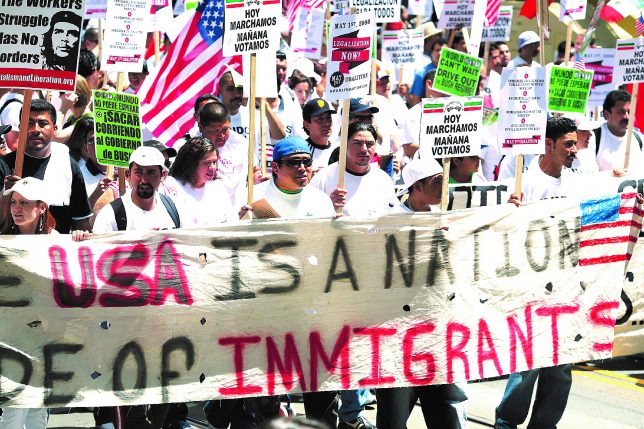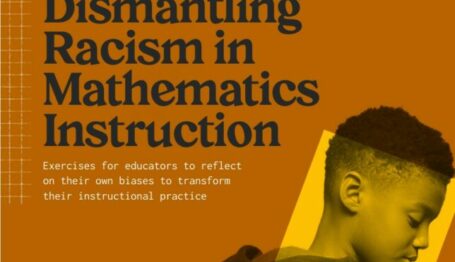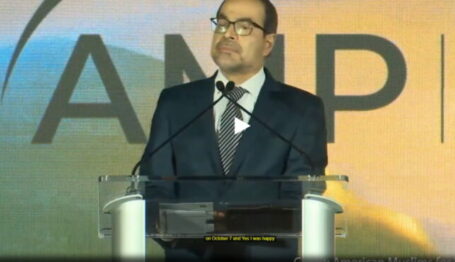Foundation Watch
Dark Money Ascendant: Influencing the Immigration Debate


Dark Money Ascendant (Full Series)
The 501(c)4 | Atlantic Philanthropies| Influencing the Immigration Debate | Mission Accomplished
Summary: Armed with a large endowment from left-wing duty-free shopping tycoon Charles “Chuck” Feeney, the soon-to-dissolve Bermuda-based Atlantic Philanthropies invented a new way of using tax-privileged dollars to promote radical social change in America. The foundation mastered the subversive technique of funding 501(c)(4) action groups with tax-exempt money that, were it based in the U.S., couldn’t be used to underwrite political activity of any kind. Atlantic takes credit for the enactment of Obamacare and even for driving immigration-enforcement hawk Lou Dobbs off CNN.
Immigration reform advocates “transformed what was a very hostile environment into a public discourse with the space for the human rights of immigrants to be respected and the value of immigrants to be acknowledged,” the reports states, repeating their rhetorical trick. This self-congratulation just keeps going: Atlantic’s 501(c)(4) funding “enabled organizations to be engaged in political and electoral processes with the capacity to impact immigration reform.” (Most of the $70.3 million pro-immigration war chest came from The Atlantic Advocacy Fund (AAF), a 501(c)(4) nonprofit discussed in greater detail later in this piece.)
“As a 501(c)(4), AAF is able to make grants that enable other social welfare organizations to more fully engage in the political process, including undertaking activities such as educating legislators and the public on issues related to their missions and expressing support for or in opposition to legislative proposals,” the report continued.
Getting to the heart of the matter, the report put it this way:
Although AAF did not permit its grants to be used for partisan activities, the funds it awarded for immigration reform provided greater opportunities for organizations working on this issue to have an impact by engaging directly with possible allies and organizing advocates both during and between elections. Having access to these funds provided advocates with a more comprehensive toolkit of options to engage with the opposition and pursue a strong legislative strategy. All three campaigns funded by Atlantic (CCIR, RI4A, and A4C) have used their 501(c)(4) designations to strengthen pro-immigration reform and to engage in a more sophisticated legislative battle.
CCIR is the acronym for “Coalition for Comprehensive Immigration Reform,” which received $10 million from AAF. RI4A, “Reform Immigration FOR America,” took in $5 million from AAF. A4C is “Alliance for Citizenship,” which accepted $5.5 million from AAF. All three organizations made sub-grants to other advocacy groups.
Out of the $70.3 million pool, $49,815,250 went to “other organizations within” Atlantic Philanthropies “federal immigration reform strategy.”
Here is where that nearly $50 million was spent:
| The Advocacy Fund | $ 15,209,750 |
| American Civil Liberties Union | $ 3,900,000 |
| American Immigration Law Foundation | $ 200,000 |
| American Prospect | $ 150,000 |
| America’s Voice | $ 8,850,000 |
| Applied Research Center, The | $ 550,000 |
| Brave New Films | $ 200,000 |
| Center for Community Change | $ 1,950,000 |
| Catholic Legal Immigration Network, Inc. | $ 900,000 |
| Center for Civic Action | $ 400,000 |
| Colorado Immigrant Rights Coalition Action Fund | $ 400,000 |
| Florida Immigrant Coalition | $ 170,000 |
| Grantmakers Concerned with Immigrants and Refugees | $ 110,000 |
| Heartland Alliance for Human Needs & Human Rights | $ 4,300,000 |
| Innovation Network, Inc. | $ 678,000 |
| Citizens for a Better Arizona | $ 425,000 |
| Gamaliel Faith and Democracy Campaign | $ 300,000 |
| Junta for Progressive Action, Inc. | $ 75,000 |
| Latino Victory Party | $ 1,000,000 |
| Leadership Conference on Civil and Human Rights | $ 400,000 |
| Leadership Conference on Civil Rights Education Fund | $ 1,100,000 |
| Mexican American Legal Defense and Educational Fund | $ 450,000 |
| National Council of La Raza | $ 750,000 |
| National Day Laborer Organizing Network | $ 200,000 |
| National Immigration Forum | $ 60,000 |
| National Immigration Forum Action fund | $ 200,000 |
| National Immigration Law Center – Immigrant Justice Fund | $ 375,000 |
| National People’s Action | $ 400,000 |
| New Organizing Institute | $ 100,000 |
| New World Foundation | $ 50,000 |
| Oxfam-America Inc. | $ 2,000,000 |
| Pacific News Service/New America Media | $ 1,900,000 |
| Partnership for New American Economy | $ 500,000 |
| PICO Action Fund | $ 200,000 |
| Regents of the University of California at Berkeley | $ 712,500 |
| Sixteen Thirty Fund | $ 650,000 |
| Total | $ 49,815,250 |
Notes: The Applied Research Center is now known as Race Forward: The Center for Racial Justice Innovation. National Council of La Raza is now known as UnidosUS. National People’s Action is now known as People’s Action.
(Source: “Advocacy, Politics & Philanthropy: A Reflection on a Decade of Immigration Reform Advocacy”)
Using the 501(c)(4) platform, Atlantic Philanthropies contributed more money than any other donors active in funding immigration reform efforts from 2004 to 2014—according to the “Advocacy, Politics & Philanthropy” report. This method of funding “allowed for a more defined and powerful legislative strategy.” According to an unidentified source quoted in the report, the 501(c)(4) funding worked wonders:
By mobilizing voters and being able to focus on electoral politics, 501(c)(4) funding enabled advocates to exert more influence over legislators in their districts. “The ability to be effective…comes from having [501(c)(4)] funding. One of the keys to our movement’s success is that the political class is now convinced…that Latino, Asian, and [other] immigrant voters…care deeply about immigration.
Whether immigrant voters actually do care deeply about immigration is beside the point. In politics perception is reality, as the old adage goes.
The 501(c)(4) funding “was perceived by advocates as resulting in legislators taking them more seriously and listening more closely than they had previously,” which helped make immigration reform “a gateway issue.” The report continues:
Many advocates felt that the infusion of 501(c)(4) funding through the campaign pressured the key players in the immigration reform movement to come together and agree upon strategy. Having a comprehensive immigration reform strategy led to more focused messaging and communications and contributed to an overall increase in visibility of immigration reform in the U.S. Others felt that the perception of 501(c)(4) dollars gave the immigration reform advocates their greatest power. “It allowed them to play above their weight class in a way that [501(c)(3)] dollars wouldn’t have allowed.”
The 501(c)(4) monies “enabled advocates to leverage the power of the electorate to take a stronger stance and influence politics. Advocates were able to keep political pressure on elected officials through civic engagement activities designed to mobilize the Latino voter base. The combination of having a unified advocacy strategy, mobilizing the base, and getting the message out enabled the field to elevate the issue of immigration reform and change the public discourse.”
In the final installment of Dark Money Ascendant, we examine the strategic advantages of Atlantic Philanthropies planned spend down.



